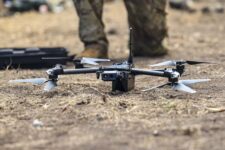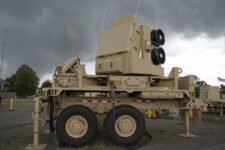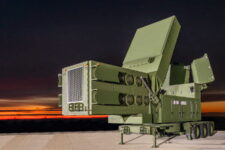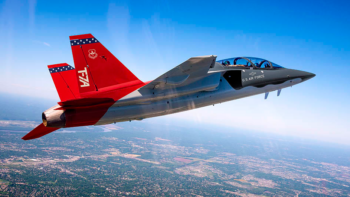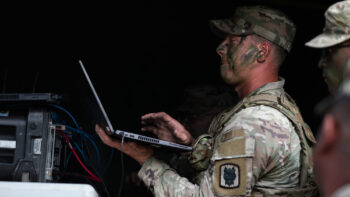
An Estonian Armed Forces official inspects a prototype bunker during a live fire test (Estonian Centre for Defence Investments)
WASHINGTON — In collaboration with Latvia, Lithuania and Poland, Estonia has completed the test phase of three bunker prototypes, attacking and then assessing the “weak points” of each design, as the four nations ramp up efforts to slow any future Russian ground invasion and shore up NATO’s Eastern flank.
Testing of the fortifications, founded on an original plan to construct 600 bunkers across the borders of Estonia, Latvia and Lithuania, took place at the Estonian Defence Forces Central Training Area, Harju County on Oct. 10. A new report will follow in the coming weeks to “see how to proceed,” Magnus Saar, Estonia’s national armaments director, told Breaking Defense on the sidelines of the AUSA trade show.
“We didn’t fire from a howitzer. We just used the explosives on the bunkers in specific areas, at different ranges, at different points,” he said. “So let’s say ‘functional testing’ as opposed to imitating battlefield conditions.”
The main purpose of the tests was to “strike at their [various bunkers] weaknesses and see how” each performed in order to inform a frontline design, said Saar. “I think the main lesson was the heavier stuff works better,” he said.
One of the bunker prototypes was “made from smaller elements that the military can install themselves,” while the other two were both “one piece” type constructs, added a spokesperson for the Estonian Centre for Defence Investments (RKIK).
Of those two, one of the one-piece solutions requires “special machinery” to install, while the other was proposed by the “construction company,” according to the RKIK spokesperson.
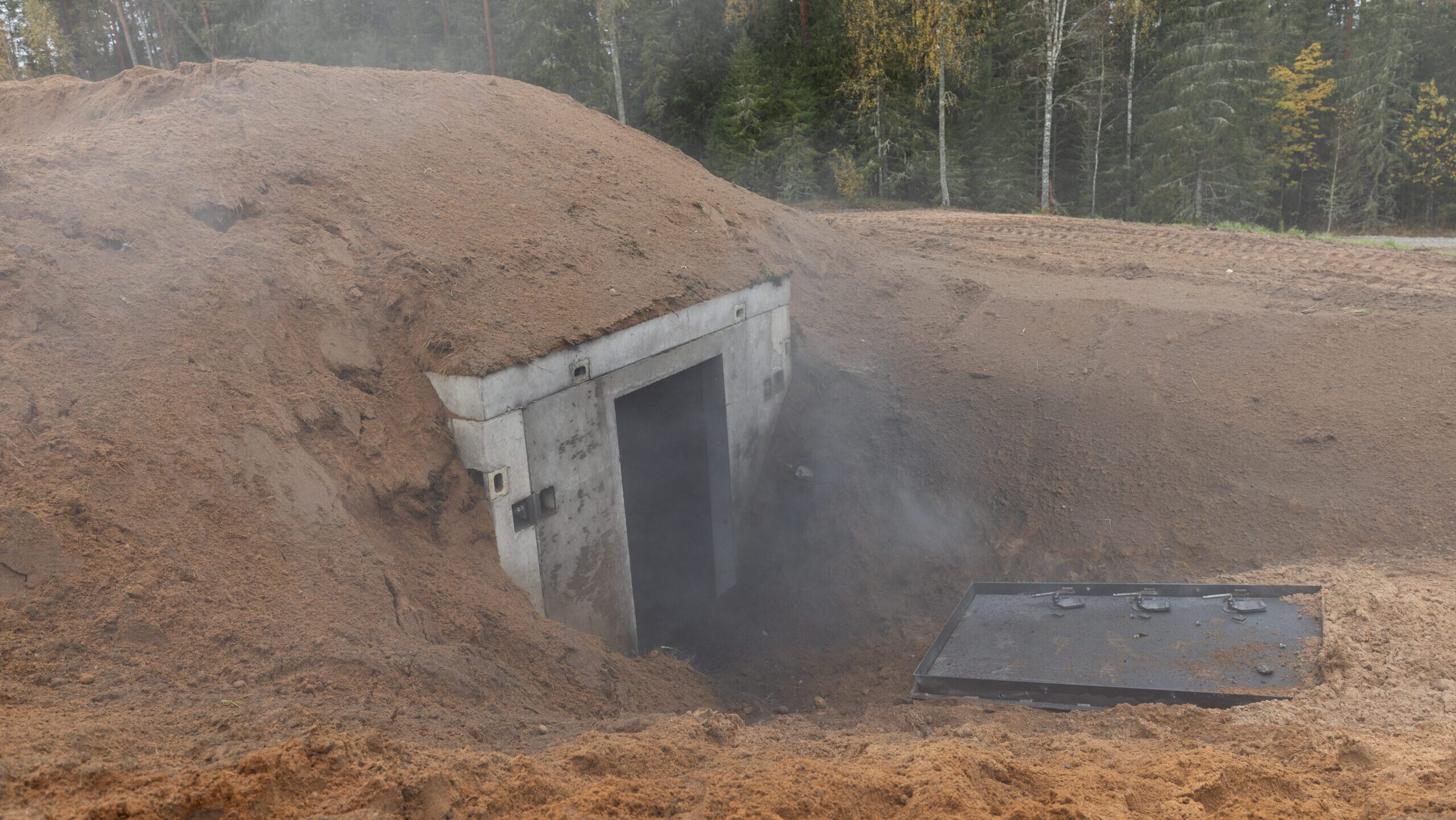
Estonia, Latvia and Lithuania are committed to establishing a 600 strong Baltic bunker line stretching across their borders. (Estonian Centre for Defence Investments)
“One of the goals was to create the fortifications in a relatively light way so that they can be erected with minimal additional tools” and not require cranes, noted Saar.
Based loosely on France’s ill-fated Maginot Line, the new Baltic bunkers are expected to be 35 square metres (377 square feet), hardened to withstand artillery strikes and house up to 10 soldiers. Supporting storage areas are set to be filled with non-explosive ordnance.
In July, then-chief of Estonia’s defense forces Gen. Martin Herem explained the broader strategy, saying the line is not meant to stop a Russian invasion dead in its tracks, but to “shape it’ into something more manageable to defend against and buy time for NATO reinforcements.
“Politically, it sounds like ‘Let’s make a hole and stop them there, every inch and all this.’ That’s stupid,” said Herem.
RELATED: Baltic defensive bunker line not meant to stop Russian attack, but ‘shape’ it, general says
Herem said the idea is also not to build the entire line ahead of time, but to build long-term projects now while identifying which parts could be completed by infantry within, say, a month if NATO had indications Russia was planning to invade.
Saar declined to talk about specific timelines for the bunkers currently under assessment, despite Tallinn previously stating that a first production ready bunker could be established in 2025, but hinted that design tweaks could be implemented and additional tests carried out before then.
As part of the tests, “all of our neighbors were present, Poles, Lithuanians, Latvians, and they’re all planning the same thing,” explained Saar. “Maybe we can share some designs, steal ideas from each other, because… in the end, we are all one big operations area.”
He also said that “most” long lead items are under contract, so that if a “crisis starts to develop, we will be very fast to implement” the defensive live.
Estonia shares an Eastern border with Russia and has long been clear sighted about the prospect of its neighbour mounting an attack on a NATO nation, near term.
The country’s former Prime Minister Kaja Kallas warned in January that the alliance has between three to five years to prepare for war with Moscow.
Looking at the “Baltic defense line, the idea is, of course, that infantry is very vulnerable, and we’ve seen that … in Ukraine’s case,” said Saar. “Fortifying [defenses] when you’re already in hostilities is difficult, so that’s why we’re trying to prepare ahead of time.”



